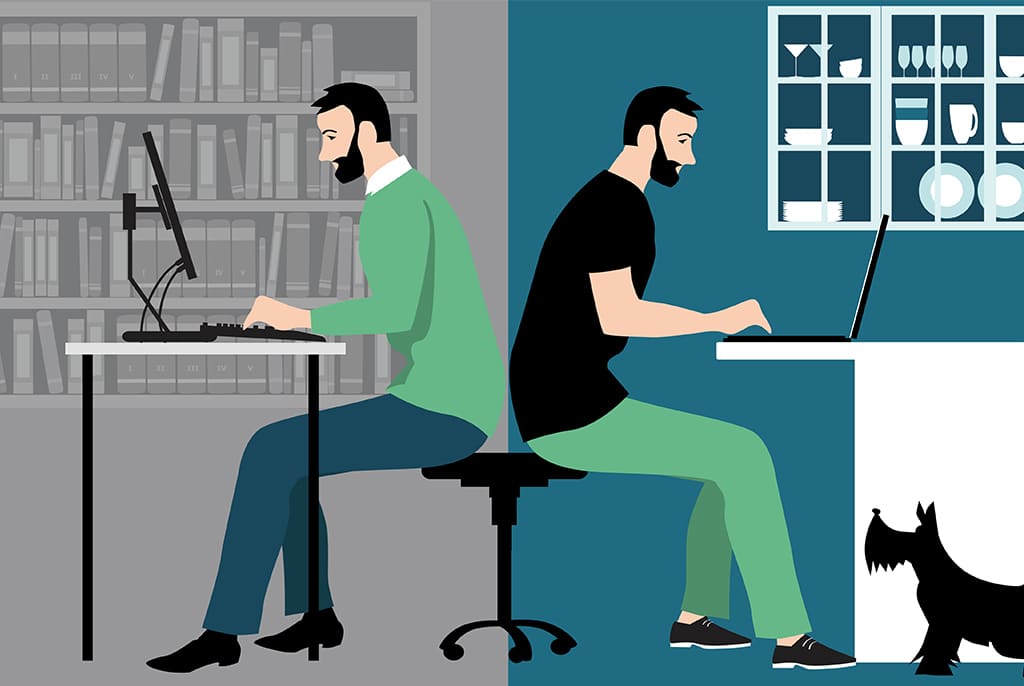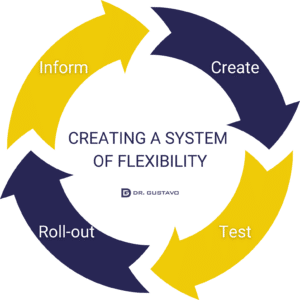3 tenets leaders need to understand about the future of work

As the world of work continues to evolve, the competition for top talent is becoming increasingly fierce. To attract and retain the best employees, employers need to make their companies more compelling.
How? Consider the following tenets about the future of work and build your workforce with these ideas in mind.
1. People want agency.
Current and future employees want it. Most managers and leaders withhold it. But every successful organization offers it.
What is “it”? Agency.
Human beings want agency. If you work with human beings (and I’d suggest that for most of you reading this, 99.9% of your employees are human), agency is what your people seek.
Agency can be defined as the capacity to make decisions that impact our lives.
So why are leaders and managers withholding something that our current and future employees want?
2. Employers fear the unknown.
Human beings don’t fear change; they fear loss. Managers and leaders are afraid of losing all sorts of things: control, power, influence, authority, comfort, certainty, performance, profitability — and the list goes on.
And while “fear of loss” is a nice three-word sound bite, in reality, they fear perceived loss, potential loss and the possibility of loss; it doesn’t even have to be an actual loss.
This is where the friction between current leaders and managers and current and future employees lies. This is also where the fundamental conflict of hybrid/remote work exists: Managers and leaders desire control (or fear loss), and employees desire agency.
3. Flexibility is the solution.
How do we smooth over these points of friction? Flexibility.
Flexibility is about giving employees “autonomy of time” over their schedule — agency. During the pandemic, many employees were forced to work from home. Others still had to work from a specific location. Employees working from home received “autonomy of location,” but they also received autonomy of time because they had more control over when they worked, as well as where.
Now that we are in a post-pandemic world, employees who never received that kind of agency want it, and those who received it don’t want to give it up. Companies that successfully offer flexibility are winning the fierce war for talent. So how can we create a win for employers and employees applying flexibility?
Creating a win-win scenario
Employers who recruit, engage and retain the best talent have learned an important truth: Flexibility is not a right; it is a privilege that comes with high performance. At its most effective, flexibility is a cultural reward for high performance.
Most companies continue to apply financial rewards like bonuses or incentives for high performance. Financial rewards have very short legs — they last a short time — until the reward is used up. Conversely, cultural rewards have long legs because they must be maintained.
Flexibility is a cultural reward that needs to be maintained. It can be taken away if performance drops.
The four-step process to creating a system of flexibility as a cultural reward:
1. Inform the system
Ask your people, “What type of flexibility would you like to see in your schedule?” They’ll tell you if you ask! Most leaders don’t ask.
2. Create the system
Go to a group or team of high performers and say, “We learned from you and your colleagues that you would all like more flexibility in your work schedules. We would like you, as a team, to create a system of flexibility that will allow you to maintain our current levels of performance or higher.”
Key point: Now, they get to create a system with metrics that tie into yours (ie. profitability, utilization, etc.). If they don’t choose your metrics specifically, you simply ensure their metrics tie into yours.
3. Test the system
Go to a different team or group of high performers and tell them, “We learned from you and your colleagues that you would like more flexibility in your work schedules. We went to these people, and they created this system of flexibility. We would like you, as a team, to test the system to ensure you can maintain our current levels of performance or higher.”
4. Roll out the system
Get the data back from Step 3. Ensure they have met the standard of performance or higher. Only then do you roll it out.
You are not risking your organization on anything. You are having your employees inform the system, create it and test it under your supervision. And only after it’s been proven to be successful do you roll it out.

Source: www.drgustavo.com
Want to learn more? Then be sure to register for Gustavo’s discussion, The Future of Work: Navigating Culture and Workforce Trends in 2024, which includes a facilitated Q&A session with Vistage Chair Vipon Kumar.
Related Resources
Future-proof talent: What matters to tomorrow’s workforce matters today [webinar on demand]
Category : Hiring, Recruitment, Sourcing
Tags: future trends, multigenerational workforce, workforce expansion
